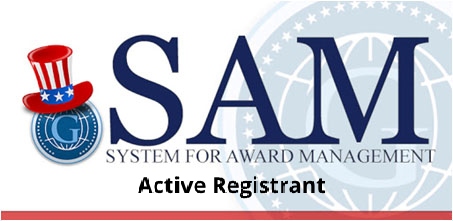In May 2025, a landmark survey by PwC in collaboration with The Conference Board revealed that 93 percent of senior executives at U.S. public companies want to replace at least one director—a record high in the survey’s five-year history. Furthermore, 78 percent believe two or more directors should be refreshed. Executives attribute their dissatisfaction to factors such as advanced director age (56 percent) and excessive outside board commitments (47 percent), while only 32 percent feel their boards currently possess the right expertise. Compounding the matter, one-third of respondents report that directors are increasingly intervening in day-to-day operations, a rate double that of the prior year. These findings expose a growing chasm between corporate management and board governance at a time when boards are expected to navigate complex risks, including cybersecurity threats, climate imperatives, and geopolitical volatility, while preserving clear lines of accountability and strategic focus.
Frustration with Traditional Board Composition
Corporate executives increasingly question whether their boards reflect the skill sets required for today’s accelerated environment. Despite efforts to recruit directors with backgrounds in digital transformation, sustainability, and risk management, only about one-third of executives believe their boards have the “right mix” of expertise. Many boards still lean heavily on long-tenured members whose deep institutional memory may not translate into agility or up-to-date domain know-how. For instance, directors appointed during the pre-2000 era may be unfamiliar with integrated ESG reporting or advanced data analytics oversight. This misalignment hampers boards’ ability to provide proactive strategic guidance, leaving management teams without a robust governance partner capable of challenging assumptions and anticipating emerging threats.
Expertise Gaps and Overboarding
One of the most pervasive contributors to perceived director ineffectiveness is “overboarding,” where individuals serve on multiple boards simultaneously. Nearly half of the executives in the PwC–Conference Board survey identified excessive outside commitments as a primary concern. Academic research supports this linkage: directors holding more than three board seats tend to exhibit lower attendance rates and diminished monitoring capabilities, consistent with the “busyness hypothesis” of overboardedness. Although some proxy advisors, such as Institutional Shareholder Services (ISS) and Glass Lewis, have capped the number of non-executive directors at five boards and CEOs at two outside boards, respectively, public disclosures show some S&P 500 companies have board-service caps, but no centralized data confirms how many—this remains an open issue. Without universal service caps or tenure guidelines, boards risk entrenching directors whose scattered focus undermines rigorous oversight and dilutes the collective bench strength necessary for high-stakes governance.
Governance Overreach: Blurred Lines Between Oversight and Management
Paradoxically, as executives lament underperformance, many also report directors overstepping their governance remit. Thirty-two percent of surveyed managers observed board members intervening in operational decisions, ranging from vendor selection to mid-level hiring, a rate twice that of the previous year. Although these intrusions frequently stem from directors’ subject-matter expertise in areas such as technology or sustainability, they risk eroding the clear separation of duties that is fundamental to effective corporate governance. When boards stray into execution, they can slow decision-making, undermine management morale, and generate confusion over accountability. In one high-profile case, a prominent director’s insistence on implementing a specific cybersecurity platform without consulting the CISO reportedly led to cost overruns and deployment delays, illustrating how misaligned interventions can backfire when governance charters are ambiguous.
Complex Risk Oversight Challenges
Modern boards face unprecedented enterprise risks that transcend traditional financial metrics. Cybersecurity oversight has become a central board responsibility, yet many directors acknowledge gaps in their ability to evaluate threat landscapes, incident response frameworks, and recovery plans. Merely adding technical experts to board committees is insufficient; many governance experts recommend scenario-based cyber and climate exercises for continuous director education. Similarly, climate governance requires a nuanced understanding of climate-scenario modeling, transition risk quantification, and evolving disclosure mandates under the SEC and international frameworks. As regulatory scrutiny tightens around environmental and cyber risk reporting, boards must transition from passive recipients of management briefings to active stewards who can challenge assumptions and calibrate risk appetites without micromanaging operational teams.
Implications for Shareholders and Stakeholders
Board governance tensions reverberate well beyond the C-suite. Shareholders are increasingly vocal about board renewal policies, channeling their discontent into proxy battles when perceived governance inertia threatens to undermine value creation. In one illustrative example, Adidas’s annual shareholder vote saw Chairman Thomas Rabe reelected by only 64.4 percent of votes, down from 69 percent the previous year, amid criticism of his multiple executive roles and calls for greater board diversity. Activist funds leverage such inequities to press for strategic pivots or director replacements, arguing that refreshed boards are better equipped to tackle emergent challenges. Meanwhile, customers and employees interpret board strife as a symptom of internal misalignment, which can potentially erode brand trust and employee engagement. In industries sensitive to reputation, such as finance and healthcare, boards perceived as out of touch can exacerbate stakeholder anxieties, ultimately undermining long-term performance and the social license to operate.
Toward a New Governance Paradigm
To bridge the divide between management and oversight, companies must adopt a multi-pronged strategy to retool board composition, enforce more precise governance boundaries, and invest in director development. First, formalizing board-service and tenure limits, such as a maximum of four to five public company boards per non-executive director and mandatory retirement ages, can safeguard director bandwidth and promote regular infusion of new perspectives. Second, transitioning to skills-based nominating processes, underpinned by independent competency assessments, ensures candidates bring functional expertise and the capacity to collaborate effectively. Third, robust onboarding and continuous education programs, including immersive cyber-resilience exercises and climate risk workshops, empower directors to understand intricate risk scenarios without defaulting to directive management roles. Fourth, codifying distinct governance charters delineating oversight versus execution responsibilities helps prevent board overreach while preserving management autonomy. Finally, implementing structured 360-degree performance evaluations, soliciting confidential feedback from CEOs, fellow directors, and external advisors, fosters a culture of candid dialogue and continuous improvement.
Conclusion
The record-breaking level of executive dissatisfaction with board composition marks a significant turning point for corporate governance. As businesses navigate an era characterized by technological upheaval, climate urgency, and geopolitical flux, boards must evolve from traditional oversight bodies into agile partners capable of strategic foresight and disciplined stewardship. Organizations can mend the frayed bonds between directors and management by curbing overboarding, closing expertise gaps through targeted recruitment and education, and reinforcing clear governance frameworks. In doing so, they restore executive confidence, bolster stakeholder trust, and strengthen their ability to navigate the multifaceted challenges of the twenty-first century.
Go out and Lead!



